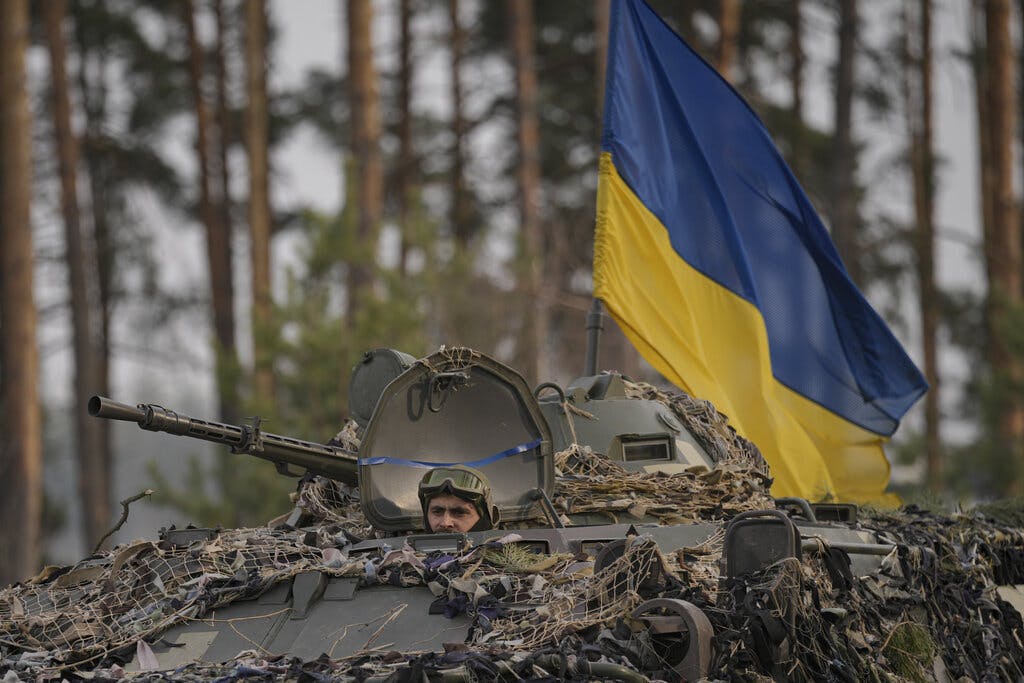Ukraine Strikes Provide Evidence Russia ‘Repeatedly Lied’ About Intentions
As sunset approached Friday, riveting reports surfaced of a claim made by the governor of Russia’s Belgorod region that a Ukrainian airstrike by a pair of helicopter gunships caused fires and wounded two people on Russian soil.

ATHENS — It looks like April Fool’s Day comes early for the Kremlin. During a period of approximately 24 hours leading into the new month that began Friday, the number of Russian airstrikes at various points throughout Ukraine doubled versus previous days, according to U.S. defense officials.
A senior U.S. defense official told Fox News that Russian jets flew 300 strike missions over Ukraine just a day after the Russians told the world they would pull back some troops to establish mutual trust. These missions make it easier to decode Vladimir Putin’s intentions than it might have once appeared.
“It’s an open question whether he’s actually pulling back,” President Biden told reporters.
Another heavy hitter in this global war room was less diplomatic. Speaking at a press conference yesterday, the NATO secretary-general, Jens Stoltenberg, said, “We have heard the recent statements that Russia will scale down military operations around Kiev and in northern Ukraine, but Russia has repeatedly lied about its intentions.”
Mr. Stoltenberg added: “According to our intelligence, Russian units are not withdrawing, but repositioning.”
A British defense intelligence update Friday morning confirmed that while Ukrainian forces have continued to make successful if limited counterattacks to the east and northeast of Kiev, both Chernihiv and the capital have been subjected to more air and missile strikes despite Russian claims of reducing activity in these locations. And while much of the Russian repositioning is focused on the eastern reaches of the country, Mr. Putin isn’t having a cakewalk there, either.
Various reports Friday indicated Ukrainian forces repelled seven attacks outside Donetsk and Luhansk in eastern Ukraine’s disputed Donbass region. And as sunset approached Friday, riveting reports surfaced of a claim made by the governor of Russia’s Belgorod region, Vyacheslav Gladkov, that a Ukrainian airstrike by a pair of helicopter gunships caused fires and wounded two people on Russian soil.
That attack, reported by AP though not yet corroborated by Ukraine, prompted a cryptic rebuke from the Kremlin spokesman, Dmitry Peskov, who said, “Certainly, this is not something that can be perceived as creating comfortable conditions for the continuation of the talks.”
Is there a Russian retreat from Kiev in progress? Ukraine’s General Staff of the Armed Force said in a Facebook post Friday morning that there is “a continuation of the partial withdrawal of units of Russian occupation troops from the north of the Kiev region towards the state border with the Republic of Belarus. The movement of mixed columns of various quantities is fixed. The columns also include civilian vehicles (trucks, buses, vans, cars) that were stolen by Russian invaders during their temporary occupation. In addition, the opponent carries out the property that was looted.”
Russian forces have also retreated from the area around the Chernobyl nuclear power plant, which they captured on the first day of the war. Ukrainian news agency Interfax also reported that while fleeing the power plant, the Russian occupiers “took away” the Ukrainian National Guardsmen who had been held captive since February 24.
Ukraine’s state nuclear company, Energoatom, confirmed that Russian troops had dug trenches in a heavily contaminated part of the Chernobyl exclusion zone, exposing themselves to heavy radiation in the process. Some are reportedly receiving treatment in nearby Belarus.
The death toll is rising from a Russian rocket hit on a regional administration building in the densely populated southern Ukrainian port city and shipbuilding center of Mykolaiv on Tuesday. On April 1 local authorities reported that a total of 24 people fell victim to the catastrophic strike that tore a hole through the multistory building; 23 bodies were pulled from the rubble and one victim died of injuries later at the hospital.
Human Rights Watch reported that Russian forces fired cluster munition rockets into Mykolaiv in at least three separate attacks in the month of March, causing considerable casualties. Rescue workers at the scene of Tuesday’s rocket attack have been searching the wreckage around the clock.
Kherson is a regional capital in southern Ukraine, southeast of Mykolaiv and near the mouth of the Dnieper River as it flows into the Black Sea. It is currently under Russian military occupation and the Kyiv Independent reports that Russian forces are cracking down on “disobedient” residents as well as looting everything from food at supermarkets to microwave ovens.
As the Russian forces grow increasingly frustrated with constant pro-Ukrainian protests, the paper reports, violent crackdowns and abductions are on the rise and as yet unconfirmed threats of mass deportations loom. Ongoing battles in the region surrounding Kherson, however, mean that Russian control of the city may not yet be a done deal.
In another form of war, Russian forces have destroyed at least six grain storage facilities in eastern Ukraine, Reuters says. A U.S. official confirmed that Russia has repeatedly targeted grain silos in eastern Ukraine, worsening a potential food shortage worldwide. This week the Italian prime minister, Mario Draghi, urged Europe to cultivate all available land, a tenth of which is normally left fallow.
Ukraine is the world’s fourth-largest exporter of grain. If Russia’s invasion has delayed the crop sowing season it has by no means stopped it.
The Ukrainian prime minister, Denys Shmyhal, said in a video address yesterday that the sowing campaign has already started in 20 regions of Ukraine and called this “really good news, because on the same day last year, the sowing campaign began in only 15 regions.”
In thanking Ukraine’s farmers for their dedication, Mr. Shmyhal added: “Today, our farmers are no less courageous and loyal to their front,” and “the future food security of the country and the world depends on them.”

